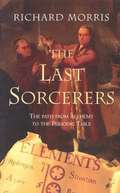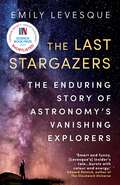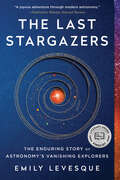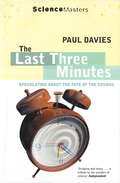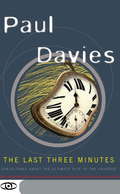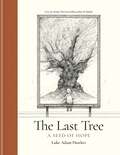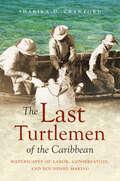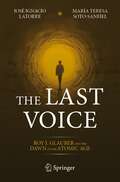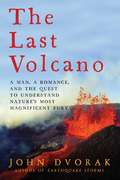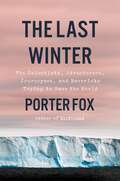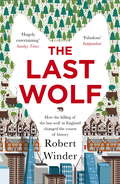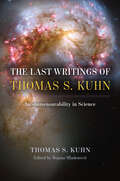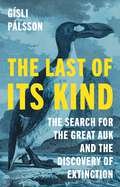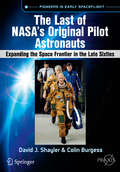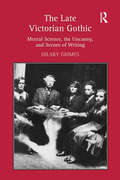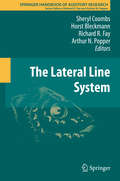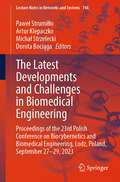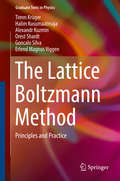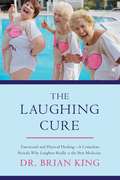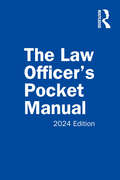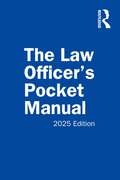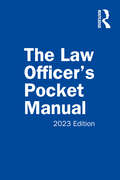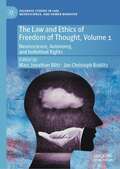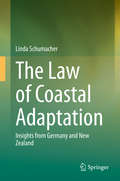- Table View
- List View
The Last Sorcerers: The Path From Alchemy To The Periodic Table
by Richard MorrisThey started with four: earth, air, fire, and water. From these basics, they sought to understand the essential ingredients of the world. Those who could see further, those who understood that the four were just the beginning, were the last sorcerers – and the world’s first chemists. What we now call chemistry began in the fiery cauldrons of mystics and sorcerers seeking not to make a better world through science, but rather to make themselves richer through magic formulas and con games. But among these early magicians, frauds, and con artists were a few far-seeing “alchemists” who, through rigorous experimentation, transformed mysticism into science. By the 18th century the building blocks of nature, the elements of which all matter is composed, were on the verge of being discovery. Initially, it was not easy to determine whether a substance really was an element. Was water just water, plain and simple? Or could it be the sum of other (unknown and maybe unknowable) parts? And if water was made up of other substances, how could it be broken down into discreet, fundamental, and measurable components? Scientific historians generally credit the great 18th century French chemist Antoine Lavoisier with addressing these fundamental questions and ultimately modernizing the field of chemistry. Through his meticulous and precise work this chaotic new field of scientific inquiry was given order. Exacting by nature, Lavoisier painstakingly set about performing experiments that would provide lasting and verifiable proofs of various chemical theories. Unfortunately, the outspoken Lavoisier eventually lost his head in the Terror, but others would follow his lead, carefully examining, measuring, and recording their findings. As the field slowly progressed, another pioneer was to emerged almost 100 years later. Dimitri Mendeleev, an eccentric genius who cut his flowing hair and beard but once a year, sought to answer the most pressing questions that remained to chemists: Why did some elements have properties that resembled those of others? Were there certain natural groups of elements? And, if so, how many, and what elements fit into them? It was Mendeleev who finally addressed all these issues when he constructed the first Periodic Table in the late 1800s. But between and after Lavoisier and Mendeleev were a host of other colorful, brilliant scientists who made their mark on the field of chemistry. Depicting the lively careers of these scientists and their contributions while carefully deconstructing the history and the science, author Richard Morris skillfully brings it all to life. Hailed by Kirkus Reviews as a “clear and lively writer with a penchant for down-to-earth examples” Morris’s gift for explanation – and pure entertainment – is abundantly obvious. Taking a cue from the great chemists themselves, Morris has brewed up a potent combination of the alluringly obscure and the historically momentous, spiked with just the right dose of quirky and ribald detail to deliver a magical brew of history, science, and personalities.
The Last Stargazers: The Enduring Story of Astronomy's Vanishing Explorers
by Emily LevesqueTo be an astronomer is to journey to some of the most inaccessible parts of the globe, braving mountain passes, sub-zero temperatures, and hostile flora and fauna. Not to mention the stress of handling equipment worth millions. It is a life of unique delights and absurdities … and one that may be drawing to a close. Since Galileo first pointed his telescope at the heavens, astronomy has stood as a fount of human creativity and discovery, but soon it will be the robots gazing at the sky while we are left to sift through the data. In The Last Stargazers, Emily Levesque reveals the hidden world of the professional astronomer. She celebrates an era of ingenuity and curiosity, and asks us to think twice before we cast aside our sense of wonder at the universe.
The Last Stargazers: The Enduring Story of Astronomy's Vanishing Explorers
by Emily LevesqueThe story of the people who see beyond the starsHumans from the earliest civilizations were spellbound by the night sky-craning their necks each night, they used the stars to orient themselves in the large, strange world around them. Stargazing is a pursuit that continues to fascinate us: from Copernicus to Carl Sagan, astronomers throughout history have spent their lives trying to answer the biggest questions in the universe. Now, award-winning astronomer Emily Levesque shares the stories of modern-day stargazers, the people willing to adventure across high mountaintops and to some of the most remote corners of the planet, all in the name of science.From the lonely quiet of midnight stargazing to tall tales of wild bears loose in the observatory, The Last Stargazers is a love letter to astronomy and an affirmation of the crucial role that humans can and must play in the future of scientific discovery.In this sweeping work of narrative science, Levesque shows how astronomers in this scrappy and evolving field are going beyond the machines to infuse creativity and passion into the stars and inspires us all to peer skyward in pursuit of the universe's secrets.
The Last Three Minutes (SCIENCE MASTERS)
by Paul DaviesA fascinating account of current theories on the way the universe will come to an endThe last three minutes of the universe has been the subject of much scientific and lay speculation for many years. Now, Paul Davies clearly and concisely sets out the arguments for three possible outcomes:1) the universe will go on expanding indefinitely2) it will slow down and eventually collapse into a zero space, the reverse of the Big Bang3) it will reach a steady state neither expanding nor contracting but staying the same foreverAs a religious man, Davies is equally curious about the implications for humans: is there any sense in which humanity can expect to survive for eternity?
The Last Three Minutes: Conjectures About The Ultimate Fate Of The Universe
by Paul DaviesRagnarok. Armageddon. Doomsday. Since the dawn of time, man has wondered how the world would end. In The Last Three Minutes, Paul Davies reveals the latest theories. It might end in a whimper, slowly scattering into the infinite void. Then again, it might be yanked back by its own gravity and end in a catastrophic "Big Crunch. " There are other, more frightening possibilities. We may be seconds away from doom at this very moment. Written in clear language that makes the cutting-edge science of quarks, neutrinos, wormholes, and metaverses accessible to the layman, The Last Three Minutes treats readers to a wide range of conjectures about the ultimate fate of the universe. Along the way, it takes the occasional divergent path to discuss some slightly less cataclysmic topics such as galactic colonization, what would happen if the Earth were struck by the comet Swift-Tuttle (a distinct possibility), the effects of falling in a black hole, and how to create a "baby universe. " Wonderfully morbid to the core, this is one of the most original science books to come along in years.
The Last Tree: A Seed of Hope
by Luke Adam HawkerFrom the Sunday Times bestselling author of Together. Imagine a world without trees. A world that is in many ways like our world, but where magnificent canopies, tree climbing and leaves rustling in the breeze are now only distant memories.Until a young girl comes along, a girl who is brave and spirited and willing to follow where her imagination takes her. Through Olive's adventures in the world of trees we are reminded of nature's extraordinary power and beauty, and her actions ultimately sow the seeds of new life in her own world.From the mind and pen of bestselling author Luke Adam Hawker, The Last Tree is a powerful evocation of the fragility of our natural world and a magnificent celebration of its beauty.Praise for Together:"An accurate and thoughtful account of one of the most challenging years in modern history." -The Guardian"Hawker's images always seem to have just the right mixture of gravitas and sly, understated humour." -The Scotsman
The Last Turtlemen of the Caribbean: Waterscapes of Labor, Conservation, and Boundary Making (Flows, Migrations, and Exchanges)
by Sharika D. CrawfordIlluminating the entangled histories of the people and commodities that circulated across the Atlantic, Sharika D. Crawford assesses the Caribbean as a waterscape where imperial and national governments vied to control the profitability of the sea. Crawford places the green and hawksbill sea turtles and the Caymanian turtlemen who hunted them at the center of this waterscape. The story of the humble turtle and its hunter, she argues, came to play a significant role in shaping the maritime boundaries of the modern Caribbean. Crawford describes the colonial Caribbean as an Atlantic commons where all could compete to control the region's diverse peoples, lands, and waters and exploit the region's raw materials. Focusing on the nineteenth and twentieth centuries, Crawford traces and connects the expansion and decline of turtle hunting to matters of race, labor, political and economic change, and the natural environment. Like the turtles they chased, the boundary-flouting laborers exposed the limits of states' sovereignty for a time but ultimately they lost their livelihoods, having played a significant role in legislation delimiting maritime boundaries. Still, former turtlemen have found their deep knowledge valued today in efforts to protect sea turtles and recover the region's ecological sustainability.
The Last Voice: Roy J. Glauber and the Dawn of the Atomic Age
by José Ignacio Latorre María Teresa Soto-SanfielMost human beings don’t manage to achieve fame. Roy J. Glauber did so for two different reasons. Glauber was not only a Nobel-Prize winning physicist, but also one of the last surviving scientists who worked in Los Alamos in the Theoretical Division of the Manhattan Project. He was a witness to all the events and knew all the scientists associated with the creation and launch of the first atomic bombs. This book is the product of a series of long interviews held with Roy over three years: in Benasque (Spain) in 2011, and later in Singapore and Cambridge (USA). Its pages give a first-hand account of a true protagonist, one who is independent, lucid, sagacious and committed to the truth. The authors have respectfully preserved his spirit: his voice is the one that matters. The authors asked the questions and they relay his answers. Their comments are confined to the footnotes and to brief explanatory paragraphs, added simply to provide certain relevant details. The importance of the events that Glauber describes here is indisputable, as therefore is the book itself. The events narrated in its pages will remain part of world history, perhaps for centuries or even millennia. We live today in the shadow of the decisions made at that time.
The Last Volcano: A Man, a Romance, and the Quest to Understand Nature's Most Magnificent Fury
by John DvorakRanging from Yellowstone in Wyoming to Mount Pelee in the Caribbean, from Bogoslof and Pavlov in Alaska, to Sakurajima in Japan, and, finally, to the massive volcanoes of Kilauea and Mauna Loa in Hawaii—The Last Volcano reveals the incredible journey of a man on a mission to understand the awesome power of volcanic eruptions. Volcanoes have fascinated—and terrified—people for ages. They have destroyed cities and ended civilizations. John Dvorak, the acclaimed author of Earthquake Storms, looks into the early scientific study of volcanoes and the life of the man who pioneered the field, Thomas Jaggar. Educated at Harvard, Jaggar went to the Caribbean after Mount Pelee exploded in 1902, killing more than 26,000 people. Witnessing the destruction and learning about the horrible deaths these people had suffered, Jaggar vowed to dedicate himself to a study of volcanoes. What followed was fifty years of global travel to eruptions in Italy, Alaska, Central America, Japan and the Pacific. In 1912, he built a small science station at the edge of a lake of molten lava at Kilauea volcano in the Hawaiian Islands, with the goal of solving the mystery of why volcanoes erupt and how they could be predicted. Jaggar found something else at Kilauea: true love. She was Isabel Maydwell, a widowed school teacher who came to Kilauea to restart her life. For more than twenty ears, she and Jaggar ran the science station, living in a small house at the edge of a high cliff that overlooked the lava lake. Maydwell would quickly becoming one of the world’s most astute observers of volcanic activity. Mixed with tales of myths and rituals, as well as the author’s own experiences and insight into volcanic activity, The Last Volcano reveals the lure and romance of confronting nature in its most magnificent form—the edge of a volcanic eruption.
The Last Winter: The Scientists, Adventurers, Journeymen, and Mavericks Trying to Save the World
by Porter FoxOne man&’s &“curiously thrilling joyride&” of travelogue, history, and climatology, across a planet on the brink of cataclysmic transformation (Donovan Hohn).As the planet warms, winter is shrinking. In the last fifty years, the Northern Hemisphere lost a million square miles of spring snowpack and in the US alone, snow cover has been reduced by 15-30%. On average, winter has shrunk by a month in most northern latitudes.In this deeply researched, beautifully written, and adventure-filled book, journalist Porter Fox travels along the edge of the Northern Hemisphere's snow line to track the scope of this drastic change, and how it will literally change everything—from rapid sea level rise, to fresh water scarcity for two billion people, to massive greenhouse gas emissions from thawing permafrost, and a half dozen climate tipping points that could very well spell the end of our world.This original research is animated by four harrowing and illuminating journeys—each grounded by interviews with idiosyncratic, charismatic experts in their respective fields and Fox's own narrative of growing up on a remote island in Northern Maine.Timely, atmospheric, and expertly investigated, The Last Winter will showcase a shocking and unexpected casualty of climate change—that may well set off its own unstoppable warming cycle.
The Last Wolf: The Hidden Springs of Englishness
by Robert WinderIt is often assumed that the national identity must be a matter of values and ideas. But in Robert Winder's brilliantly-written account it is a land built on a lucky set of natural ingredients: the island setting that made it maritime; the rain that fed the grass that nourished the sheep that provided the wool, and the wheat fields that provided its cakes and ale. Then came the seams of iron and coal that made it an industrial giant.In Bloody Foreigners Robert Winder told the rich story of immigration to Britain. Now, in The Last Wolf, he spins an English tale. Travelling the country, he looks for its hidden springs not in royal pageantry or politics, but in landscape and history.Medieval monks with their flocks of sheep . . . cathedrals built by wool . . . the first shipment of coal to leave Newcastle . . . marital contests on a village green . . . mock-Tudor supermarkets - the story is studded with these and other English things.And it starts by looking at a very important thing England did not have: wolves.
The Last Wolf: The Hidden Springs of Englishness
by Robert WinderIt is often assumed that the national identity must be a matter of values and ideas. But in Robert Winder's brilliantly-written account it is a land built on a lucky set of natural ingredients: the island setting that made it maritime; the rain that fed the grass that nourished the sheep that provided the wool, and the wheat fields that provided its cakes and ale. Then came the seams of iron and coal that made it an industrial giant.In Bloody Foreigners Robert Winder told the rich story of immigration to Britain. Now, in The Last Wolf, he spins an English tale. Travelling the country, he looks for its hidden springs not in royal pageantry or politics, but in landscape and history.Medieval monks with their flocks of sheep . . . cathedrals built by wool . . . the first shipment of coal to leave Newcastle . . . marital contests on a village green . . . mock-Tudor supermarkets - the story is studded with these and other English things.And it starts by looking at a very important thing England did not have: wolves.
The Last Writings of Thomas S. Kuhn: Incommensurability in Science
by Thomas S. KuhnA must-read follow-up to The Structure of Scientific Revolutions, one of the most important books of the twentieth century. This book contains the text of Thomas S. Kuhn’s unfinished book, The Plurality of Worlds: An Evolutionary Theory of Scientific Development, which Kuhn himself described as a return to the central claims of The Structure of Scientific Revolutions and the problems that it raised but did not resolve. The Plurality of Worlds is preceded by two related texts that Kuhn publicly delivered but never published in English: his paper “Scientific Knowledge as Historical Product” and his Shearman Memorial Lectures, “The Presence of Past Science.” An introduction by the editor describes the origins and structure of The Plurality of Worlds and sheds light on its central philosophical problems. Kuhn’s aims in his last writings are bold. He sets out to develop an empirically grounded theory of meaning that would allow him to make sense of both the possibility of historical understanding and the inevitability of incommensurability between past and present science. In his view, incommensurability is fully compatible with a robust notion of the real world that science investigates, the rationality of scientific change, and the idea that scientific development is progressive.
The Last of Its Kind: The Search for the Great Auk and the Discovery of Extinction
by Gísli PálssonHow an iconic bird&’s final days exposed the reality of human-caused extinctionThe great auk is one of the most tragic and documented examples of extinction. A flightless bird that bred primarily on the remote islands of the North Atlantic, the last of its kind were killed in Iceland in 1844. Gísli Pálsson draws on firsthand accounts from the Icelanders who hunted the last great auks to bring to life a bygone age of Victorian scientific exploration while offering vital insights into the extinction of species.Pálsson vividly recounts how British ornithologists John Wolley and Alfred Newton set out for Iceland to collect specimens only to discover that the great auks were already gone. At the time, the Victorian world viewed extinction as an impossibility or trivialized it as a natural phenomenon. Pálsson chronicles how Wolley and Newton documented the fate of the last birds through interviews with the men who killed them, and how the naturalists&’ Icelandic journey opened their eyes to the disappearance of species as a subject of scientific concern—and as something that could be caused by humans.Blending a richly evocative narrative with rare, unpublished material as well as insights from ornithology, anthropology, and Pálsson&’s own North Atlantic travels, The Last of Its Kind reveals how the saga of the great auk opens a window onto the human causes of mass extinction.
The Last of NASA's Original Pilot Astronauts: Expanding the Space Frontier in the Late Sixties (Springer Praxis Books)
by Colin Burgess David J. ShaylerResulting from the authors' deep research into these two pre-Shuttle astronaut groups, many intriguing and untold stories behind the selection process are revealed in the book. The often extraordinary backgrounds and personal ambitions of these skilled pilots, chosen to continue NASA's exploration and knowledge of the space frontier, are also examined. In April 1966 NASA selected 19 pilot astronauts whose training was specifically targeted to the Apollo lunar landing missions and the Earth-orbiting Skylab space station. Three years later, following the sudden cancellation of the USAF's highly classified Manned Orbiting Laboratory (MOL) project, seven military astronauts were also co-opted into NASA's space program. This book represents the final chapter by the authors in the story of American astronaut selections prior to the era of the Space Shuttle. Through personal interviews and original NASA documentation, readers will also gain a true insight into a remarkable age of space travel as it unfolded in the late 1960s, and the men who flew those historic missions.
The Late Victorian Gothic: Mental Science, the Uncanny, and Scenes of Writing
by Hilary GrimesExamining the automatic writing of the spiritualist séances, discursive technologies like the telegraph and the photograph, various genres and late nineteenth-century mental science, this book shows the failure of writers' attempts to use technology as a way of translating the supernatural at the fin de siècle. Hilary Grimes shows that both new technology and explorations into the ghostly aspects of the mind made agency problematic. When notions of agency are suspended, Grimes argues, authorship itself becomes uncanny. Grimes's study is distinct in both recognizing and crossing strict boundaries to suggest that Gothic literature itself resists categorization, not only between literary periods, but also between genres. Treating a wide range of authors - Henry James, Rudyard Kipling, Arthur Conan Doyle, George Du Maurier, Vernon Lee, Mary Louisa Molesworth, Sarah Grand, and George Paston - Grimes shows how fin-de-siècle works negotiate themes associated with the Victorian and Modernist periods such as psychical research, mass marketing, and new technologies. With particular attention to texts that are not placed within the Gothic genre, but which nevertheless conceal Gothic themes, The Late Victorian Gothic demonstrates that the end of the nineteenth century produced a Gothicism specific to the period.
The Lateral Line System
by Arthur N. Popper Richard R. Fay Sheryl Coombs Horst BleckmannThe Lateral Line System provides an overview of the key concepts and issues surrounding the development, evolution, neurobiology, and function of the lateral line, a fascinating yet somewhat enigmatic flow-sensing system. The book examines the historical precedence for linking the auditory and lateral line systems, its structure and development, use of the lateral line system of zebrafish as a model system, physical principles governing the response properties of the lateral line, the behavioral relevance of this sensory system to the lives of fish, and an examination of how this information is shaped and encoded by the peripheral and central nervous systems. Contents The Gems of the Past: A Brief History of Lateral Line Research in the Context of the Hearing Sciences - Sheryl Coombs and Horst Bleckmann Morphological Diversity, Development, and Evolution of the Mechanosensory Lateral Line System - Jacqueline F. Webb The Hydrodynamic of Flow Stimuli - Matthew J. McHenry and James C. Liao The Biophysics of the Fish Lateral Line - Sietse M. van Netten and Matthew J. McHenry Sensory Ecology and Neuroethology of the Lateral Line - John Montgomery, Horst Bleckmann, and Sheryl Coombs Information Encoding and Processing by the Peripheral Lateral Line System - Boris Philippe Chagnaud and Sheryl Coombs The Central Nervous Organization of the Lateral Line System - Mario F. Wullimann and Benedikt Grothe Central Processing of Lateral Line Information - Horst Bleckmann and Joachim Mogdans Functional Overlap and Nonoverlap Between Lateral Line and Auditory Systems - Christopher B. Braun and Olav Sand The Hearing Loss, Protection, and Regeneration in the Larval Zebrafish Lateral Line - Allison B. Coffin, Heather Brignull, David W. Raible, and Edwin W Rubel
The Latest Developments and Challenges in Biomedical Engineering: Proceedings of the 23rd Polish Conference on Biocybernetics and Biomedical Engineering, Lodz, Poland, September 27–29, 2023 (Lecture Notes in Networks and Systems #746)
by Paweł Strumiłło Artur Klepaczko Michał Strzelecki Dorota BociągaThe book contains 35 chapters, in which you can find various examples of the development of methods and/or systems supporting medical diagnostics and therapy, related to biomedical imaging, signal and image processing, biomaterials and artificial organs, modelling of biomedical systems, which were presented as current research topics at the 23rd Polish Biocybernetics and Biomedical Engineering Conference, held at the Institute of Electronics, Lodz University of Technology in September 2023. The ongoing and dynamic development of AI-based data processing and analysis methods plays an increasingly important role in medicine. This book addresses these issues by presenting applications of such methods in various areas, such as disease diagnosis and prediction, particularly through the use of image data analysis algorithms. Other topics covered include personalized medicine, where multimodal patient data is acquired and analyzed, as well as robotic surgery and clinical decision support.The book is of interest to an advanced and broad readership, including researchers and engineers representing both medical, biological, and engineering viewpoints. Its readers may also be graduate and postgraduate students in various fields such as biomedical engineering, artificial intelligence, biomaterials, and medical electronics, as well as software developers in R&D departments working in the field of intelligent healthcare engineering.
The Lattice Boltzmann Method
by Timm Krüger Halim Kusumaatmaja Alexandr Kuzmin Orest Shardt Goncalo Silva Erlend Magnus ViggenThis book is an introduction to the theory, practice, and implementation of the Lattice Boltzmann (LB) method, a powerful computational fluid dynamics method that is steadily gaining attention due to its simplicity, scalability, extensibility, and simple handling of complex geometries. The book contains chapters on the method's background, fundamental theory, advanced extensions, and implementation. To aid beginners, the most essential paragraphs in each chapter are highlighted, and the introductory chapters on various LB topics are front-loaded with special "in a nutshell" sections that condense the chapter's most important practical results. Together, these sections can be used to quickly get up and running with the method. Exercises are integrated throughout the text, and frequently asked questions about the method are dealt with in a special section at the beginning. In the book itself and through its web page, readers can find example codes showing how the LB method can be implemented efficiently on a variety of hardware platforms, including multi-core processors, clusters, and graphics processing units. Students and scientists learning and using the LB method will appreciate the wealth of clearly presented and structured information in this volume.
The Laughing Cure: Emotional and Physical Healing—A Comedian Reveals Why Laughter Really Is the Best Medicine
by Brian KingDr. Brian King is a psychologist and stand-up comedian whose humor therapy seminars are attended by more than ten thousand people each year. In The Laughing Cure, King combines wit with medical research to reveal the benefits of laughter and humor on physical and emotional health. King’s language is humorous and uplifting, and his advice is backed in science. The Laughing Cure features clinical studies and interviews with some of the nation’s top doctors that prove that laughter lowers blood pressure, reduces stress hormones, increases muscle flexion, boosts immune systems, and triggers endorphins. It’s been shown to relieve depression, to produce a general sense of wellbeing, even to make us more productive, loving, and kind.The Laughing Cure presents step-by-step guidance and proven techniques to embrace laughter as both medicine for current conditions and preventative medicine. This highly unique and enjoyable read explains why much-talked about, but little understood methods of therapy like those embraced by acclaimed humor doctor Patch Adams—played by Robyn Williams in a 1998 film—and laughter yoga actually work. Growing up, King wanted to be a stand-up comic; his PhD. was his backup plan. Little did he know, the impact his unique situation would put him in, the way it would allow him to help others. Very few doctors have the ability to heal the way that King does; his method is cheap, easy, chemical-free—even fun. With The Laughing Cure, readers will learn how—and why—laughter saves lives.
The Law Officer's Pocket Manual: 2024 Edition
by John G. Miles Jr. David B. Richardson Anthony E. ScudellariThe Law Officer’s Pocket Manual is a handy, pocket-sized, spiral-bound manual that highlights basic legal rules for quick reference and offers examples showing how those rules are applied. The manual provides concise guidance based on U.S. Supreme Court rulings on constitutional law issues and other legal developments, covering arrest, search, surveillance, and other routine as well as sensitive areas of law enforcement. It includes more than 100 examples drawn from leading cases to provide guidance on how to act in a wide variety of situations. The 2023 edition is completely updated to reflect recent court decisions. This book helps you keep track of everything in a readable and easy-to-carry format. Routledge offers tiered discounts on bulk orders of 5 or more copies: For more information, please visit: https://www.routledge.com/collections/16268
The Law Officer's Pocket Manual: 2025 Edition
by John G. Miles Jr. David B. Richardson Anthony E. ScudellariPrepared by Patrick J. Sobkowski, J.D.The Law Officer’s Pocket Manual is a handy, pocket-sized, spiral-bound manual that highlights basic legal rules for quick reference and offers examples showing how those rules are applied. The manual provides concise guidance based on U.S. Supreme Court rulings on constitutional law issues and other legal developments, covering arrest, search, surveillance, and other routine as well as sensitive areas of law enforcement. It includes more than 100 examples drawn from leading cases to provide guidance on how to act in a wide variety of situations. The 2025 edition is completely updated to reflect recent court decisions. This book helps you keep track of everything in a readable and easy-to-carry format.Routledge offers tiered discounts on bulk orders of 5 or more copies: For more information and to learn about other Books for Law Enforcement Professionals, please visit: https://www.routledge.com/collections/16268
The Law Officer’s Pocket Manual, 2023 Edition
by John G. Miles Jr. David B. Richardson Anthony E. ScudellariThe Law Officer’s Pocket Manual is a handy, pocket-sized, spiral-bound manual that highlights basic legal rules for quick reference and offers examples showing how those rules are applied. The manual provides concise guidance based on U.S. Supreme Court rulings on constitutional law issues and other legal developments, covering arrest, search, surveillance, and other routine as well as sensitive areas of law enforcement. It includes more than 100 examples drawn from leading cases to provide guidance on how to act in a wide variety of situations. The 2023 edition is completely updated to reflect recent court decisions. This book helps you keep track of everything in a readable and easy-to-carry format. Routledge offers tiered discounts on bulk orders of 5 or more copies: For more information, please visit: https://www.routledge.com/collections/16268
The Law and Ethics of Freedom of Thought, Volume 1: Neuroscience, Autonomy, and Individual Rights (Palgrave Studies in Law, Neuroscience, and Human Behavior)
by Marc Jonathan Blitz Jan Christoph BublitzFreedom of thought is one of the great and venerable notions of Western thought, often celebrated in philosophical texts – and described as a crucial right in American, European, and International Law, and in that of other jurisdictions. What it means more precisely is, however, anything but clear; surprisingly little writing has been devoted to it. In the past, perhaps, there has been little need for such elaboration. As one Supreme Court Justice stressed, “[f]reedom to think is absolute of its own nature” because even “the most tyrannical government is powerless to control the inward workings of the mind.” But the rise of brain scanning, cognition enhancement, and other emerging technologies make this question a more pressing one. This volume provides an interdisciplinary exploration of how freedom of thought might function as an ethical principle and as a constitutional or human right. It draws on philosophy, legal analysis, history, and reflections on neuroscience and neurotechnology to explore what respect for freedom of thought (or an individual’s cognitive liberty or autonomy) requires.
The Law of Coastal Adaptation: Insights from Germany and New Zealand
by Linda SchumacherThis work investigates law as an instrument to deal with the challenges of sea level rise. As the two countries chosen as examples differ significantly in their adaptation strategies and the corresponding legal regulations, the author presents general ideas on how any legal framework facing similar challenges could be improved. In particular, (flood) risk assessments, coastal defences and flood-resistant design as well as spatial and land use planning are discussed, including managed retreat. Moreover, conflicts as well as potential synergies of coastal adaptation and nature conservation are examined.Due to the thorough analysis this book is not just an essential read for policymakers and researchers interested in the coastal area but climate change adaptation in general as many general findings are transferrable to other impacts.
